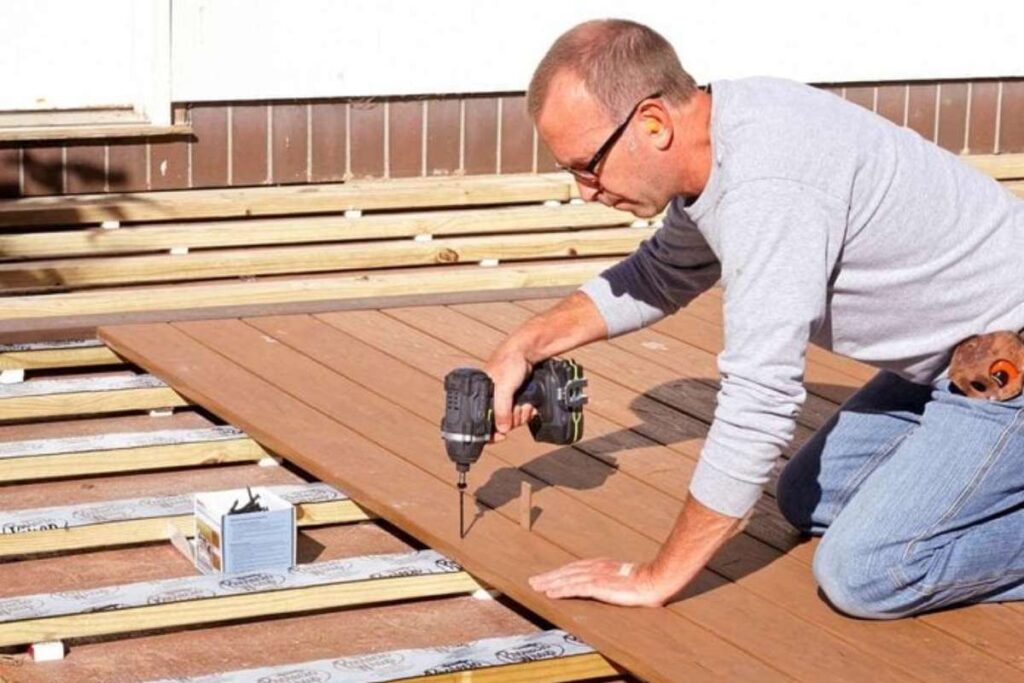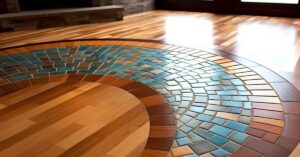
Pondering the addition of a deck to your backyard by yourself brings excitement and a bit of challenge.
It’s a project that not only promises to enhance your outdoor living space but also offers a rewarding sense of accomplishment. However, diving into deck building is not a light weekend endeavor. It demands thoughtful planning, a foundational understanding of construction techniques, and a significant time investment.
Assessing your readiness for this undertaking is crucial.
Table of Contents
Key Considerations for DIY Deck Building
Starting a deck project on your own goes beyond mere excitement. Assessing your abilities, the amount of time you can commit, and the tools you have is crucial. Careful planning and groundwork play a key role in the success of your project, ensuring your deck not only looks good but is also practical.
Essential Skills for the Task
Building a deck demands a specific set of skills and knowledge. Learning as you go is an option, but having a foundational understanding of carpentry, construction principles, and safety measures is crucial. For those starting without prior experience, it’s wise to seek insights from experienced builders, enroll in construction-related courses, or refer to comprehensive guides. This approach can enhance both your confidence and abilities in tackling the project.
Time Investment Required
A DIY deck project is a considerable time commitment. Whether tackling the project solo or with a small team, the journey from planning to completion is extensive. Each phase, from drafting your design and sourcing materials to site preparation and the actual build, often extends beyond initial estimates. Allocating ample time is essential for a smooth and stress-free project progression.
Necessary Tools and Equipment
Nailing a deck project hinges on the toolkit at your disposal.
The detail in your blueprint spells out the toolkit spectrum you’ll dive into, ranging from the basic—think hammers and measuring tapes—to the more niche gear like circular saws and power drills. Double-check your tool stash is up to snuff and ready to roll before kicking things off. If your arsenal’s missing a few pieces, borrowing or renting high-ticket items could save you a bundle. Underlining safety is key.
Gear up with the right protective wear, brush up on your local build codes, and stick to a playbook of safe construction moves from groundbreaking to the final nail.
Pro Tips for a Stellar DIY Deck
Achieving a standout DIY deck involves more than just hard work. Here are some expert tips to guide you:
- Begin with a detailed design, considering the deck’s size, layout, and any unique features you envision.
- Compile a comprehensive list of materials and budget accordingly to prevent unexpected expenses.
- Ensure the site is adequately prepared, focusing on stability, proper drainage, and compliance with local regulations.
- Adhere to the manufacturer’s instructions for installing decking materials and components meticulously.
Regular maintenance is crucial to extend your deck’s lifespan and maintain its safety and appearance.
The Pros and Cons of Professional Deck Installation
Choosing a professional for deck installation brings comfort and several perks, such as specialized knowledge, access to premium materials, and swift completion. Yet, it’s crucial to balance these pluses with the possible higher expenses and lesser hands-on involvement in the project.
Benefits of Engaging a Professional
A seasoned deck builder offers extensive experience and premium materials, ensuring your deck looks great, stands firm, and lasts long. They oversee the project from the drawing board to the final touches, sparing you time and potential hassles.
Things to Ponder When Engaging a Professional
The main downside to professional installation is the cost, often much steeper than doing it yourself. You might also find your input on the construction process more limited, making it essential to communicate clearly and set firm expectations to ensure your ideas are reflected in the end result.
Comprehensive Guide for DIY Deck Building
If you’re set on building your deck, a methodical plan and step-by-step approach are vital.
Site Preparation
- Designing Your Deck
- Determine the deck’s dimensions, shape, and location.
- Plan for traffic flow, access points, and privacy.
- Create a detailed blueprint with all specifications.
- Choosing Materials
- Select materials that offer both durability and aesthetic appeal, suitable for your climate and design preferences.
- The Build
- Secure the ledger board to your house.
- Install support posts and layout beams and joists accurately.
- Place decking boards, adhering to securing guidelines.
- Add final elements like railings and stairs.
Conclusion
Choosing between a DIY project and professional help for your deck is influenced by personal skills, time availability, and budget. Regardless of the route you choose, prioritizing safety, adhering to best practices, and compliance with regulations is key to achieving a deck that enhances your outdoor living experience for years to come.
Frequently Asked Questions
What materials are commonly used for building a backyard deck?
Common materials for building a backyard deck include pressure-treated wood, cedar, redwood, composite decking, and PVC decking.
Can the average person build a deck?
Yes, an non-professional can build a backyard deck. But if the deck is high 2nd story then should hire a professional.
Is it cheaper to build your own deck?
Yes, of course. As, you do not need to pay a amount to a professional deck builder you can save that money.

I’m Farzana, a writer with over 5 years of experience and a genuine passion for business, home improvement, fashion, and digital marketing. I love creating content that’s engaging and easy to relate to—whether I’m breaking down a marketing strategy, sharing simple home tips, or exploring the latest style trends. Writing allows me to connect with people across different interests, and I’m always excited to bring a fresh, practical perspective to every topic I cover.






